During the first tour, my only need to drive was to move a land rover or Aussie International truck out of the way.
At all other times on the tour, I was a passenger. The most remembered was riding shotgun with the SDS driver on a run to the various military outposts around Vung Tau.
They had a habit of avoiding snarl-ups and accidents and seem to have a six sense when to go off the approve route and take an alternative to keep to the timetable.
Sometimes I wondered if the RA Signals put their SDS drivers through a rally course.
They could do things with a land rover that I would never attempt.
It was on the second tour in Saigon when I had to drive myself and others around.
There were a couple of standout experiences.
The first was on a trip back to Vung Tau in a Travelall, a US four-door utility type vehicle.
As we approached the Baria crossroad, an ARVN truck loaded with recycled timber cut in front. As he straightened up a large piece of timber flew off and appeared to be coming through the windscreen. We all ducked then heard it scrape across the roof. In almost unison, three of the passengers shouted “shit the Dat is trying to kill us.” The other passenger was new to South Vietnam and just sat there with a dumb founded expression on his face as the remainder started laughing.
When it came to driving in Saigon, I had a great mentor in Cpl Wally Tako RNZASC.
He knew all the short cuts. One day he went off the congested route and he stopped and told me to get in the back slouched down so my rank was not seen.
Further down the road we approached an ARVN checkpoint and I returned the salute as best I could. He later told me that that the houses in the street were for high-ranking members of the US contingent and ARVN. Apparently, the NZ Army plate on the front of car confused the soldiers, who mistook it for some high rank personage and allowed us passage to the connecting street.
After I was given my own ex-Ambassadors Ford LTD to replace the taxis I had been using I adopted some of his techniques. Although I stopped jumping on the tail of the daily medical evacuation convoy with my lights on suggesting I was a part of it, when one time the last ambulance doors flew open and all I could see was the eyes of the heavily bandaged ARVN soldier staring at me.
After the transmission on the LTD had been adjusted I realised I could power out at the lights and beat any other traffic to the next one just as it was turning green,
On one occasion though, I mistimed it after sneaking around a loaded Lambretta and slid into the back of a taxi that had stalled at the wrong place. I didn’t do much damage as I told the driver after I bent back the number plate and kicked the engine cover back into shape so it was no longer scraping on the flywheel.
He was adamant that I pay, but when I turned out the little Dong I had in my pockets he said it wasn’t enough. Somehow, he got between me and the briefcase with secret papers for encryption in the passenger seat well. In Pidgin English, he said, “have money in there”.
I reached under the driver seat, extracted my 45 grease gun, and told him to back off.
There had been some intelligence speculation that when US military cars were stolen there was a taxi in the picture somewhere suggesting maybe the VC were up to something.
He did back off then I explained if he wanted more money it was a simple task to follow me to the NZ Embassy.
At that point, in perfect American accented English he said, “You didn’t have to present the weapon.”
He was probably only some ex-ARVN officer trying to make a living in retirement in a country beset by hyperinflation. Although when we arrived at the ARVN checkpoint to the road the Embassy was on, he continued straight ahead without stopping.
The last memorable vehicle episode should not have happened.
I was a passenger in a US double bogy truck when in the rear vision mirror I saw a child’s bike fling out between the wheels. All I could think of was “geez we have killed a kid on my second to last day in Vietnam. I ordered the driver to stop against the usual practice.
I got out, the child was unharmed, and remarkably, the bike had little damage.
It seemed at times that I was the only permanent person in my BEQ room, while my roommates were always rotating back to CONUS. One was a medic who left me his complete belt order medical kit. After I thrown out the stuff I wasn’t qualified to use such as tracheotomy kits and the like I had a reputation as been able to provide some medical service.
After I had iodine the few cuts on the child, I had a line of kids in front of me.
It was during this time that a woman decided to sneak into the cab and remove the keys to exchange for money.
A Vietnamese National Police patrol quickly arrived and when I explained our predicament, they simply laughed and drove off.
However, they must have radioed the US MPs who soon arrived and cleared us on our way again but not without a cynical questioning of “Why did you stop.”
Noel Benefield






